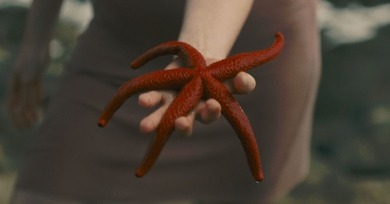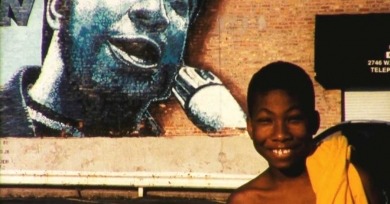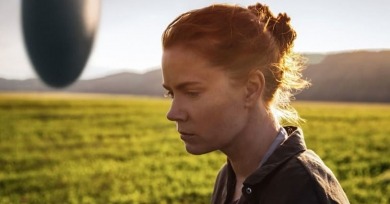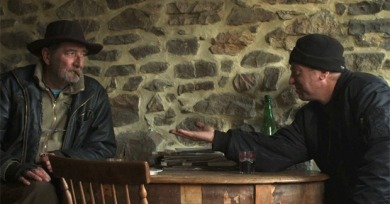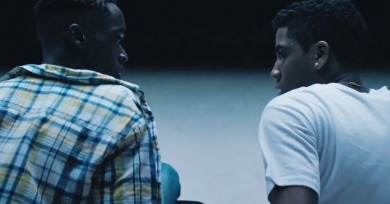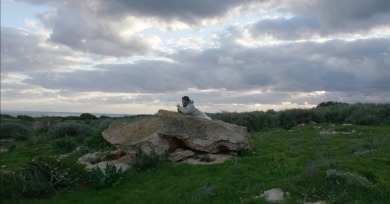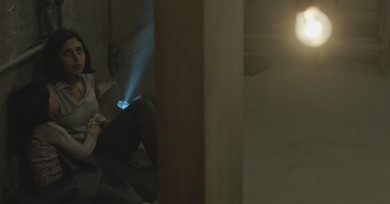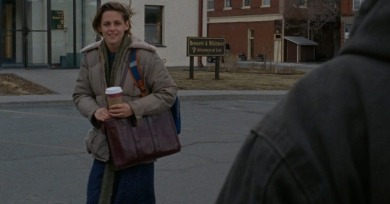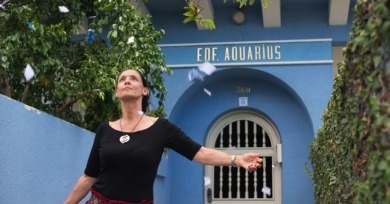Reviews
I suspect Chazelle will be a name to watch for some time to come, and his third feature suggests that he has some definite ideas about popular moviemaking. Would I maybe loathe it a little less if it were not so unimpeachably competent?
It is a laborious ordeal of unceasing histrionic assault and gymnastic hysterics, in its way a feminine counterpart to the monotonous masculine trudge of The Revenant, though Jackie has the decency at least to be brief.
A one-woman filmmaking army, Stratman exhibits a knack for choosing historically significant locations and then, through careful framing, the addition of the right sounds, the introduction of primary source texts and other unexpected choices, slowly unpacks the history of the place we are looking at.
Human languages are processed sequentially: left to right, right to left, top to bottom. Arrival draws parallels between our understanding of sentences and our notions of time and space, and then envisions a world without these boundaries.
With his willingness to throw ordinary characters into almost unbearably tragic situations from which no greater meaning seems salvageable, Lonergan stands apart from the bulk of American narrative directors working today.
Marcel is the younger of the pair, and over the course of the film, we watch him turn from 52 to 53, lose his wife of 16 years, navigate single parenthood, and attempt rehab for alcoholism.
To the extent that eroticism is about arousing acceptable forms of sexual desire, then, Elle tries to separate its motivations: using sex because one needs it, i.e. to satisfy a compulsion or dominate another through rape (unerotic), or enjoying it as an end in itself (erotic).
Directed with a rare combination of aesthetic vigor and emotional delicacy, this is a film that resonates in our culture and moment not because it was manufactured to matter, but because in its every breath it has clearly stayed true to itself.
Instead of immersing us solely into the experience of the immigrants arrived at Lampedusa, Rosi winds us around the small island again and again, meeting its lifelong denizens and newly arrived, feeling its culture and traditions and how they have or have not been affected by the influx of refugees from abroad.
Ironically for Park Chan-wook, idolized for his male revenge fantasy Oldboy, the film is an attempt at feminist filmmaking. Its structure embodies not only the female gaze but also female subjectivity, the subconscious, memory, and so on, with swift camera movements and alternating chronologies.
Probably the most impressive thing about Under the Shadow is how it manages to integrate the social and political realities of its chosen time and place into the demands of a genre narrative.
Her ability to wrangle A-list talent for her B-minus budgeted productions, is a testament to talent, self-determination, and judicious sense of adaptability—all of which could be descriptors of the people we see onscreen in Certain Women.
In Aquarius, a woman in her sixties faces threats (some real, some perhaps imagined) to her continued existence in the titular three-story beachfront apartment building she has lived in for decades and which developers hope to raze and replace with a lucrative high rise project.


